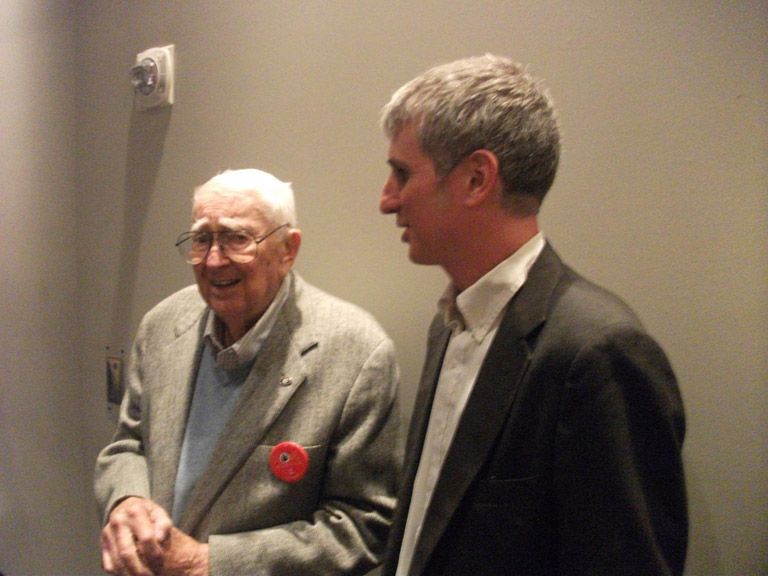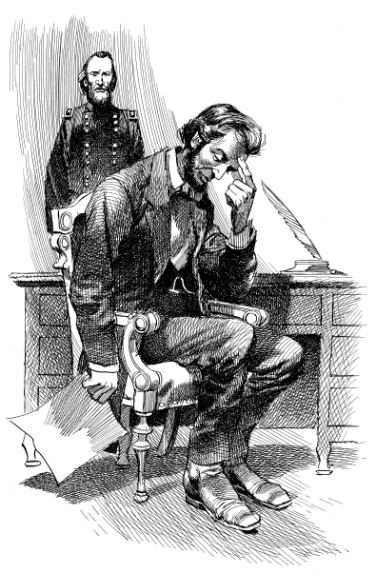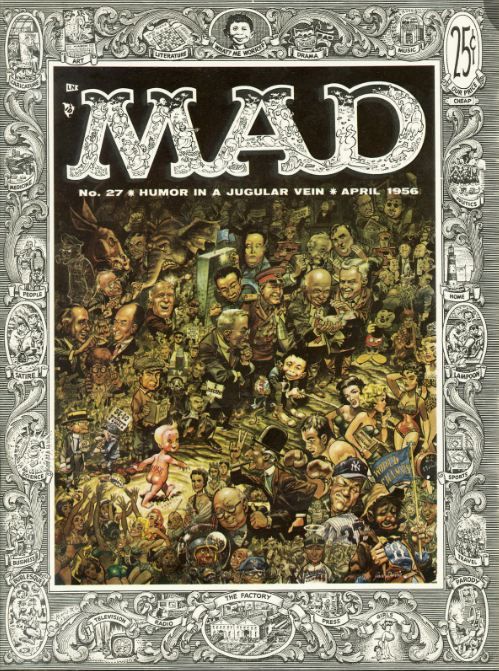As a kid growing up in Georgia in the 1970s and 1980s, my first exposure to Jack Davis' art was his University of Georgia Bulldog sports art. As I grew older, of course, I learned about the far-reaching variety of illustrations and stories he has produced throughout his career. Recently I discovered that cartoonist Patrick Dean had curated an exhibition of Davis' career for the Georgia Museum of Art in Athens: "Beyond the Bulldog: Jack Davis," which runs through Jan. 6.
Soon after the exhibit's Nov. 3 opening, I lined up Dean for an interview, in which he discusses how much Davis' family is involved with, and interested in, orchestrating exhibits of the artist's work. He also talks about what makes Davis' work resonate with him.
Tim O'Shea: How did you come to be involved as the curator of the project?
Patrick Dean: I majored in graphic design here at the University of Georgia, with a focus on illustration. In my senior year of 1998, Jack Davis, a UGA alumnus, visited the graphic design building. He stopped by a few classes, told stories, passed out sketches, etc. Ridiculously pleasant guy. My illustration professor, Alex Murawski, knew I was a big fan of Davis's work. From that year onwards the department started the Jack Davis Distinguished Visiting Artist Lecture Series. The graphic design department would invite illustrators and cartoonists to visit, talk to the classrooms, and then wind up with a big talk in a lecture hall. They've had people like Sergio Aragones, Arnold Roth, Anna Kunz, Mike Luckovich, to visit, and every year Davis would be in attendance. After I graduated in 1998, Murawski would always keep me in the loop on these talks.
Years later he began work on the Jack Davis book. Originally it was to be published through the University of Georgia and focus mostly on his sports related material. Sure that could fill a book, but he deserved a big fat coffee table book about his prolific career. Murawski was working with Davis himself on this project and members of Davis' family, who are wonderful generous people. The University passed on the book and Fantagraphics took on the project with what Murawski had started. Murawski, knowing I'm a comics person, asked for my help with collecting and advising on Davis' comic book work. Not just his work with EC, but the period between leaving Mad and his return in 1965. It was right as he had left EC and started his commercial art career, which includes a mess of work that can be hard to come by.
While the book was being assembled, Murawski had set up the Jack Davis Foundation. Featuring alumni and faculty form UGA's Lamar Dodd School of Art and two of Jack's children, the foundation was set up to make people more aware of Davis's career and to keep his legacy in the public eye. Hillary Brown, the director of communications at the Georgia Museum of Art, had known me back in the days when I drew a weekly comic strip for Flagpole Magazine, Athens' free weekly paper. Seeing my name on the foundation's website, she approached me about curating the show last summer.
How much time did you spend researching for the exhibit?
Longer than I'd thought. Originally I had visited Jack Davis III, Jack's son, to gather up some of his father's work for the 25-piece show. I figured whatever he had on hand I would grab the first 25 pieces I liked and call it a day. As I went through flat drawers of originals dating back to the late '50s, Davis III suggested I focus in on a theme for the show. The foundation was doing its own Jack Davis traveling show which centered mostly on his humorous color work of the '70s-'90s. That show is currently on display at Augusta State University's May S. Byrd Gallery. From there I centered it around his period I was most interested in; the '50s and early '60s work. The family had a few pieces from his 1965 Abraham Lincoln book that showed how well Davis could still be consistent with his style while shifting tones from humorous slapstick to restrained somber illustrations.
For the rest of the summer I had a list of contacts who were known to have large collections of comic and illustration originals. Some were dead ends; others were above and beyond helpful. Sometimes it was a waiting game to hear back from people, some art loaners were out of town, the work was elsewhere being scanned by a comics company, etc. It all came together in the end, but a lot of it was hoping the work would arrive to the museum on time. In the end it did and I'm proud of how it turned out and thankful to everyone who pitched in. Waiting on artwork aside, the other part of the show was writing the speech to be given on the afternoon of the opening and writing the descriptions for each piece. I wrote a paragraph for most of them to put the work in historical context. Others needed background, like the pages Davis had done over Kurtzman's lay outs.
Did you get to spend a good deal of time talking to Davis about what to include?
Aside from working with his son and daughter on a few pieces from their estate, it was mostly up to me to search out work to go in the show. The only thing I was sensitive about was including too much of the gorier pages from his EC horror titles. While obviously being a fan of classic monsters like Frankenstein and werewolves, Davis was said to not be as big of a fan of the stories he did at EC that were pretty graphic. I had offers for a few horror pages that had some dread and intensity to them, but no dismemberment or bloody murders, which he drew plenty of. If someone had offered up the last page from "Foul Play," it would have hurt to turn it down, but I might have so it wouldn't embarrass him. It meant a lot to have Davis at the opening looking at the work in the exhibit and I would have hated for him to look at something and cringe at it.
What was the best piece you were most pleased you were able to include?
There were several pieces that I was proud to have in the show, like the two complete EC war stories, the Two-Fisted Tales cover, or the cover to Dell's Yak-Yak #1, but the one piece that I did somersaults over when it was confirmed it was going to be in the show was the original cover for Mad #27. It's probably my favorite Mad cover. This crowd of recognizable caricatures of important figures from the mid 50's stepping aside for this New Year's baby is a real jaw-dropper to look at in person. There's so much going on and it looks so chaotic without looking crowded.
What is it about Davis' body of work that made you such a big fan of him in the first place?
I was a toddler in the late '70s, so at a young age I was looking at his work in my older brother's Mads and spotting Davis' Slim-Jim ads featuring monsters in comic books. It has a loose fun quality to it where his lines look so confident but spontaneous. The figures look like they're springing forward and the facial expressions and body gestures convey so much. When I was younger, I liked that his humorous work was just so accessible and warm. This was still when his art was on a lot of magazine covers and ads outside of Mad. And being a Georgia native, it was neat around third grade or so when I realized that the University of Georgia had its mascot defined by Davis. Here was a renowned university located in the middle of Georgia that was lucky enough to have their mascot regularly illustrated by a well-regarded comics & illustration legend.
It was around in the mid-'80s too that I first saw Davis' more dramatic work with EC comics. I'd seen a UGA football program that had a Jack Davis profile and featured the cover of Mad #2 and I think a page from one of his horror stories. I wouldn't run across any of his horror work until I was in seventh grade when I found a '70s reprint of an issue of Haunt of Fear. The last story, "What's Cookin?" was drawn by Davis, about a drifter who saves a failing diner in return from half their profits once they get back on their feet. He turns the place into a fried and bar-b-qued chicken joint. Well, the diner becomes popular and the owners realize they have to give over half their profits to this drifter like they agreed on, so what are you going to do but murder the guy? They set his home on fire with him in it, but his charred body crawls from the flames and he takes his revenge, broiling one and "Southern frying" the other murderer. This early '50s made an impression on me in 1987, so you can imagine what people thought of it when it was originally published. I was drawn into how this Jack Davis could be the same guy that drew the funny slapstick movie parodies in the Mad issues I was reading. "What's Cookin?" had these grisly characters with brooding faces and meaty hands. The story narrator, The Crypt Keeper, made his appearance on the splash page with this eerie worn face devouring a greasy chicken leg. Davis' heavy shadows gave the crooked restaurant owners a subtle sense of menace. Another year or so and Gladstone would be reprinting EC comics regularly and I got to see plenty more of Davis' horror, crime and war stories, as well as EC's other great artists.
It's also hard not to be an admirer of his work in association with Southern identity. Georgia mascots and Civil War comics aside, his figures and settings look weathered and sun baked. When he draws cartoonish rural landscapes, there's a feeling of authenticity to them. His soldiers in his EC stories are always dropping chunks of mud in their trail from soggy boots, and I can't help but associate it with growing up around Georgia red clay. That stuff really sticks to your shoes and it gets everywhere. Maybe I'm just mixing Southern up with gritty and filthy. Or maybe they're the same thing. Or maybe it's just me.
Personally, it helps that the times I've met with Davis he's been nothing but the most pleasant person to talk with. He's humble and grateful to hear anyone's story about how much they like his work, he'll sign old comics and Mad magazines with a grin, and answer questions about his career. Total classic Southern gentleman.
Has he had an influence on your own storytelling approach?
As someone who grew up admiring his work, a lot of his work comes to mind when I'm drawing certain things. I've never sat down and tried to directly copy his drawing style, but the way he draws hands is inspiring. Very heavy bony hands with fantastic gestures. From his humor work, I've figured if you're drawing a figure who's fleeing or panicking, go all out with the body language. Make a sprinting character look terrified like his body's about to fall apart as he's dashing off. Davis is also one of those artists that make me want to stick with using pen nibs, brush and a bottle of India ink. You get a great line that way and it never hurts to lay on the black when you need shadows. Trying to capture that line that doesn't look labored over is difficult. In all this I've never gotten crosshatching down successfully. Davis is excellent at it, from his early black and white commercial illustrations of the late 50's to work he's done recently, just astounding with crosshatching. I've been working on a thirty or so page story that I don't exactly want to rush through, but I do approach some panels with Davis in mind and not fretting over the details, but feeling optimistic and finishing the figures at a quicker pace that gives them that "rough sketch" feel that I always like better than anything I fret too much over. It's as close as I can get to that confident line I see so much Davis' work.



